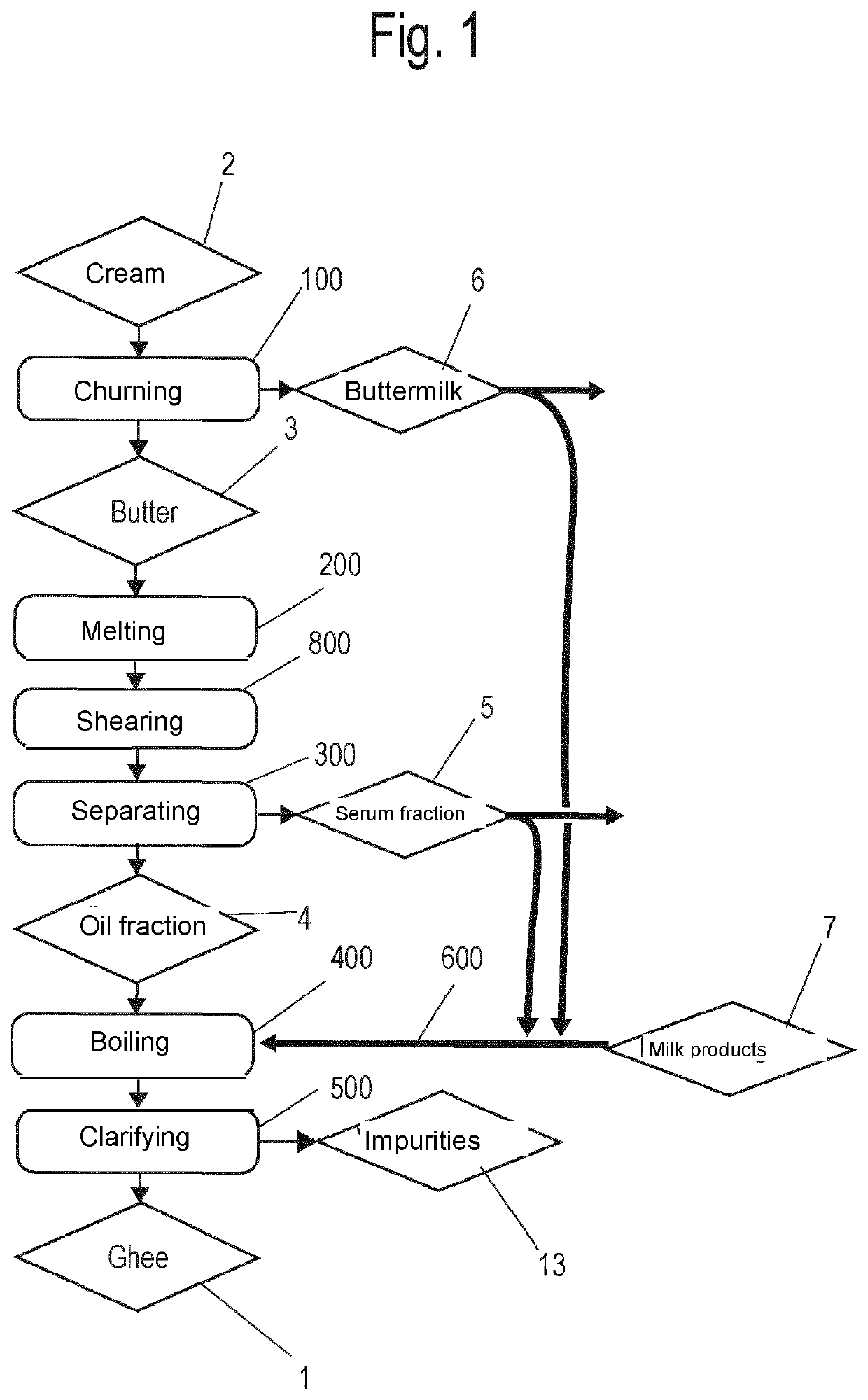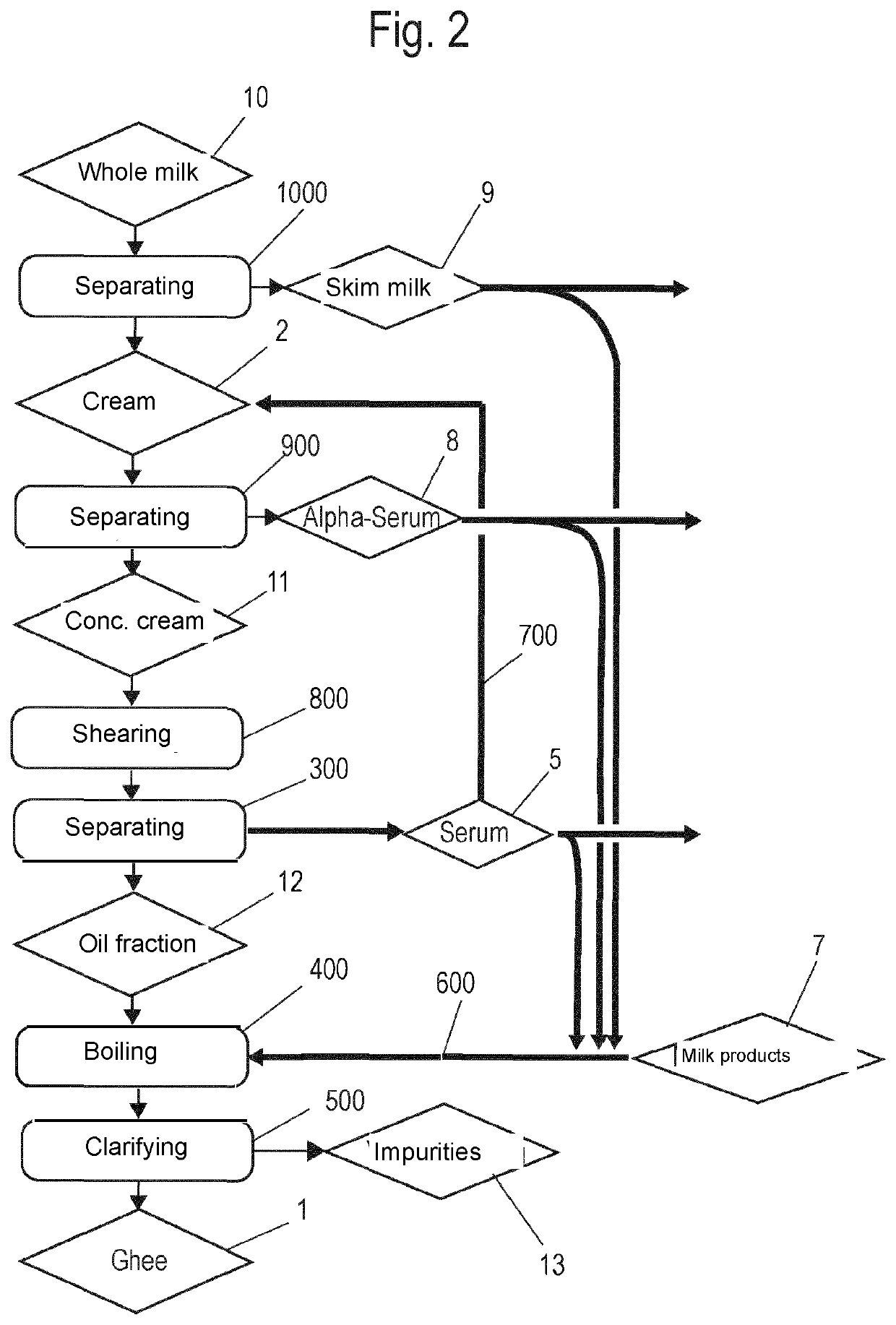Method for producing ghee
- Summary
- Abstract
- Description
- Claims
- Application Information
AI Technical Summary
Benefits of technology
Problems solved by technology
Method used
Image
Examples
Embodiment Construction
[0056]FIG. 1 shows a first method variant for the production of ghee 1. The starting material in the production is cream 2. However, an intermediate product mentioned below, such as butter 3, can also be used as a starting material.
[0057]Cream 2 typically comprises fat from 25 to 45 wt. %.
[0058]The cream 2 is first divided into butter 3 and buttermilk 6 in a churning process 100. Butter 3 has a fat content of 70 to 85 wt. %. The butter 3 is then processed further.
[0059]The butter is then melted at a temperature of between 45-90° C., ideally between 55-65° C. The melted butter is then fed inline or via a feed tank with agitator to a device for shearing the melted butter, preferably a homogenizer. In method step 800, the molten butter can then be sheared with phase transformation.
[0060]The serum-containing oil fraction thus obtained can be fed to a separator for centrifugal separation 300. In particular, the separator may be a disk separator. The terms oil and oil fraction are used sy...
PUM
 Login to View More
Login to View More Abstract
Description
Claims
Application Information
 Login to View More
Login to View More - Generate Ideas
- Intellectual Property
- Life Sciences
- Materials
- Tech Scout
- Unparalleled Data Quality
- Higher Quality Content
- 60% Fewer Hallucinations
Browse by: Latest US Patents, China's latest patents, Technical Efficacy Thesaurus, Application Domain, Technology Topic, Popular Technical Reports.
© 2025 PatSnap. All rights reserved.Legal|Privacy policy|Modern Slavery Act Transparency Statement|Sitemap|About US| Contact US: help@patsnap.com


